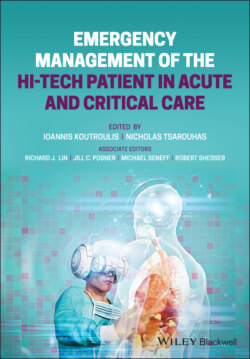Читать книгу Emergency Management of the Hi-Tech Patient in Acute and Critical Care - Группа авторов - Страница 22
Jejunal Tubes
ОглавлениеNJ, gastro‐jejunal (GJ), and J‐tubes are ideal for patients with gastric dysmotility, severe gastroesophageal reflux, recurrent emesis, and those at risk for pulmonary aspiration. The jejunum is fed continuously and at a lower rate compared to bolus feeds given through a G‐tube. Whereas the NJ and J‐tubes provide direct access to the jejunum, GJ tubes are a hybrid with both gastric and jejunal ports. The gastric port is used for medications or venting the stomach, while the jejunal port is used for continuous enteral nutrition. J‐tubes are secured to the abdominal wall with an internal retention device in the jejunum, while GJ tubes have an internal retention device within the gastric cavity and a jejunal extension that passes through the G‐tube and bypasses the stomach. Jejunal extensions carry the added risk of tube migration, volvulus around the extension tubing, and higher rates of tube clogging secondary to smaller tube size. Percutaneous J‐tubes are rarely used because of the thinness of the jejunal wall and increased risk of complications.
NJ and GJ tube placement requires fluoroscopic or endoscopic guidance for placement. Percutaneous J‐tubes are placed surgically.
